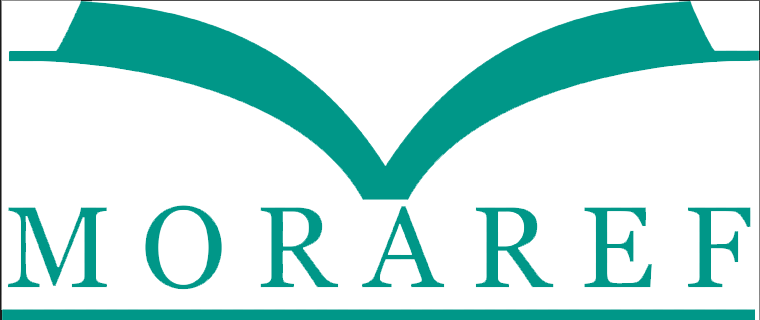Islam and Environment (A Study of Durian Skin Waste as an Adsorbent to Overcome Water Pollution)
Abstract
Nowadays environmental pollution has become a serious problem. Textile dye waste is one of the biggest contributors to environmental pollution. Durian (Durio zibethinus) has been known as a popular fruit in Indonesia. However, only several part of the durian fruit is used, namely its flesh. Durian skin is generally only thrown away and becomes waste pollutes the environment. Durian skin waste can be used as activated carbon in overcoming textile dye waste pollution. This study aims to determine the potential of durian skin from Luwu Regency, South Sulawesi as an adsorbent for textile dye waste. The process of making activated carbon is carried out through two stages that is physically by heating at 600 oC and chemically with hydrochloric acid 1M as activator and stirring for 24 hours. The quality test of activated carbon includes tests for water content, ash content, volatile matter content and fixed carbon content. The results showed that the activated carbon of the durian skin had met the standards of SNI 06-3730-1995, namely water content 12.1%, ash content 0.2%, volatile matter content 27.3% and bound carbon content 72.5%.
Downloads
References
An-Nabi, Syaikh Ahmad Abdul Rabbi, dkk. Tafsir Ibnu Katsir. Surakarta: Insan Kamil, 2015.
Badan Standarisasi Nasional. 1995. Arang Aktif Teknis. SNI 06-3730-1995. Badan Standarisasi Nasional. Jakarta.
Departemen Agama RI., Al-Qur’an dan Terjemahnya. Semarang: CV. Toha Putera, 1989.
Islamiah, Nurul Adha. 2018. “Unanda Produksi Durian Bibit Unggul Palopo”. https://makassar.tribunnews.com/2018/09/03/unanda-produksi-bibit-durian-unggul-palopo
Kristianto, H. (2017). Review: Sintesis Karbon Aktif dengan Menggunakan Aktivasi Kimia ZnCl2. Jurnal Integrasi Proses, 6(3), 104–111. https://doi.org/10.36055/jip.v6i3.1031
Lubis, R., Saragih, S. W., Wirjosentono, B., & Eddyanto, E. (2018). Characterization of durian rinds fiber (Durio zubinthinus, murr) from North Sumatera. AIP Conference Proceedings, 2049(December 2018). https://doi.org/10.1063/1.5082474
Maulina, S., & Iriansyah, M. (2018). Characteristics of activated carbon resulted from pyrolysis of the oil palm fronds powder. IOP Conference Series: Materials Science and Engineering, 309(1). https://doi.org/10.1088/1757-899X/309/1/012072
Parinduri, L., & Parinduri, T. (2020). Konversi Biomassa Sebagai Sumber Energi Terbarukan. Journal of Electrical Technology, 5(2), 88–92. https://www.dosenpendidikan.
Rosalina, Tedja, T., Riani, E., & Sugiarti, S. (2016). Pengaruh Aktivasi Fisika Dan Kimia Arang Aktif Buah Bintaro Terhadap Daya Serap Logam Berat Krom. Biopropal Indsustri, 7(1), 35–45. https://media.neliti.com/media/publications/58103-ID-pengaruh-aktivasi-fisika-dan-kimia-arang.pdf
Sánchez-Cantú, M., Janeiro-Coronel, V. J., Galicia-Aguilar, J. A., & Santamaría-Juárez, J. D. (2018). Effect of the activation temperature over activated carbon production from castor cake and its evaluation as dye adsorbent. International Journal of Environmental Science and Technology, 15(7), 1521–1530. https://doi.org/10.1007/s13762-017-1532-7
Shihab, M. Quraish. 2012. Tafsir al-Misbah, Jakarta : Lentera Hati.
Sulutaniyah, S., & Darmawan, E. (2022). Obat Herbal dari Akar Manis (Glycyrrhiza glabra L.) untuk Pencegahan dan Pengobatan Infeksi Virus H1N1, H5N1 dan COVID-19: Systematic Review. Jurnal Surya Medika, 8(1), 1–10. https://doi.org/10.33084/jsm.v8i1.2603
Tur-Ridha, Noer Khalifah., dkk. 2021. Absorption Methanyl Yellow Dye Using Hydrogel of Cassava Peel Starch (Manihot esculenta Cranzt). ALKIMIA : Jurnal Ilmu Kimia Dan Terapan, 5(1), 116–121. https://doi.org/10.19109/alkimia.v5i1.8936
Yakout, S. M., & Sharaf El-Deen, G. (2016). Characterization of activated carbon prepared by phosphoric acid activation of olive stones. Arabian Journal of Chemistry, 9, S1155–S1162. https://doi.org/10.1016/j.arabjc.2011.12.002
Copyright (c) 2022 Rahmiani Gani

This work is licensed under a Creative Commons Attribution-NonCommercial-NoDerivatives 4.0 International License.





